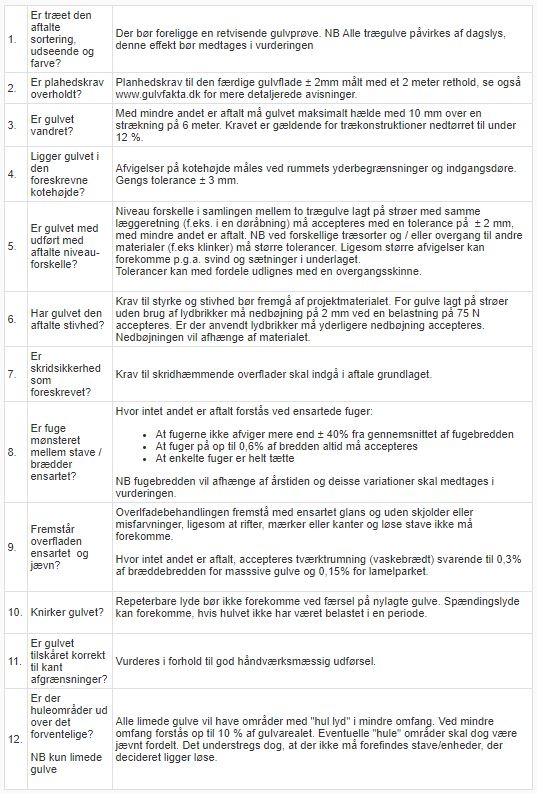- Home
- Good advice on flooring
- Floor coverings
- Wooden floors
- Expectations for wooden floors
- Acoustic panels
- Tailored rugs
- Bamboo floor and boards
- BeefEater gas grill
- Table tops & table legs
- Design floors
- Tiles and clinker
- Good advice on flooring
- Carpets
- Floor heating
- Grass carpets
- Cork floors
- Kitchen, bath & wardrobe
- Laminate floors
- Linoleum floors
- Paint, Tissue & Putty
- Mats
- Needle felt and fair carpets
- Furniture
- Care products
- Remainders & good offers
- Stavparket / Sildebensparket
- Carpet tiles
- Terrace boards
- Accessories
- Wooden floors
- Product samples
- Vinyl flooring
- Tool
- Other products
- Ceiling and wall panels
- Nice floors
- Pine floor
- Click floors
- Ordered goods
-
Hot41% Off
-
Hot46% Off
-
Hot25% Off
-
Hot54% Off
-
Hot54% Off
-
47% Off
Expectations for wooden floors
All information on this page is copied material from Gulvfakta, which is a technical reference material, Source: Gulvfakta
Our experience of a product is to a very large extent governed by the expectations we have for it. The flooring industry has prepared a leaflet that addresses the expectations you as a consumer can rightly have for a wooden floor, click here to read the expectations leaflet.
1.7.7.1 Outcome requirements
All information on this page is copied material from Gulvfakta, which is a technical reference material, Source: Gulvfakta
1.7.7.1 Outcome requirements
Assessment of wooden floors must be done on delivery, e.g. in connection with a delivery business. The starting point for the assessment is the requirements described in the contract. If nothing specific has been agreed, an assessment can take into account the below general outcome requirements.
In connection with the assessment, it is assumed that the floor is laid under the following conditions:
• Room temperature between 18 and 23C
• Humidity between 30 and 65% RH
• Wood moisture of 8±2%
• That the floors are acclimatised before laying
• That any underfloor heating has been switched off during installation
• That the subfloor complies with the supplier's requirements for flatness (normally ±2 mm on a 2 m straight line)
• That the subfloor complies with the supplier's requirements for maximum moisture content (normally max. 65% RH)
The above should at least be documented by the contractor in the performed quality assurance.
In connection with the assessment of the outcome requirements, the following conditions must be met:
• That the building is closed
• Room temperature between 18 and 23C
• Humidity between 30 and 65% RH
• Wood moisture of 8±2%
• That there is an equilibrium between the moisture content of the wood and the moisture content of the air
Guidelines for visual assessment.
Assessment of a floor surface for possible faults and defects must take place in normal daylight and at normal eye level (approx. 160 cm above the floor) and in ambient light. Circumstances that must be indicated and are not visible under the aforementioned conditions are not considered an error. Just as conditions that only appear in special lighting conditions, or can only be observed from certain places in the room, are not considered faults. The room's use and decoration (furnishings and lighting) are taken into account in the assessment. If normal daylight cannot be established or if this is not present in the normal use of the room, the floor must be assessed using artificial light. It is therefore recommended to use lamps that are fitted with tubes or bulbs that emit a light with approx. 6500 Kelvin and approx. 1100-2000 Lux on the subject, no light may be placed with direct light on the subject Halogen lighting may not be used. Halogen lighting shines in a directional manner, and gives a false image, as the light varies greatly from the center to the cone of light.
Outcome requirements:










